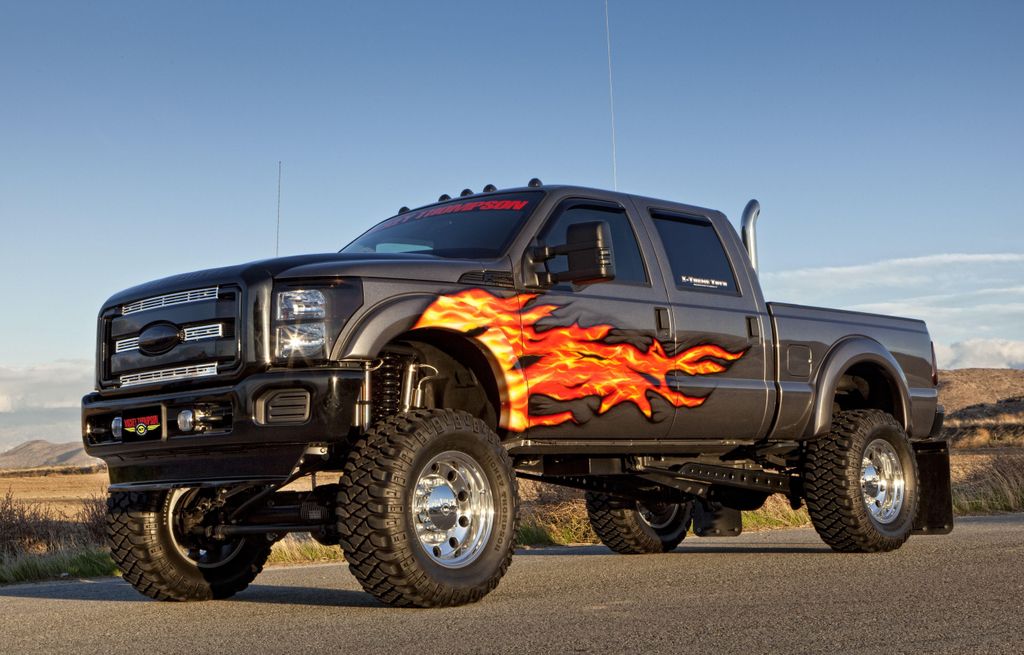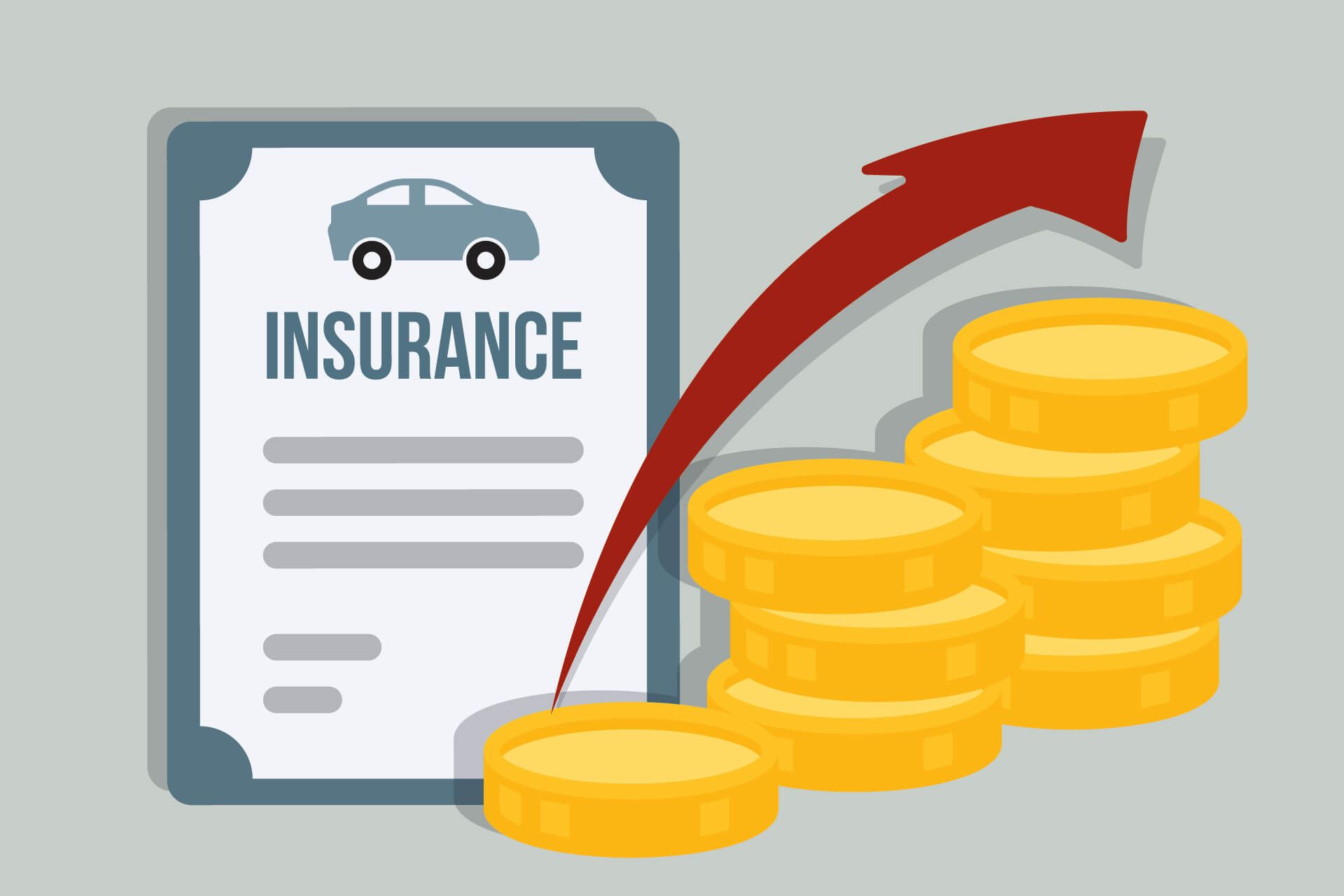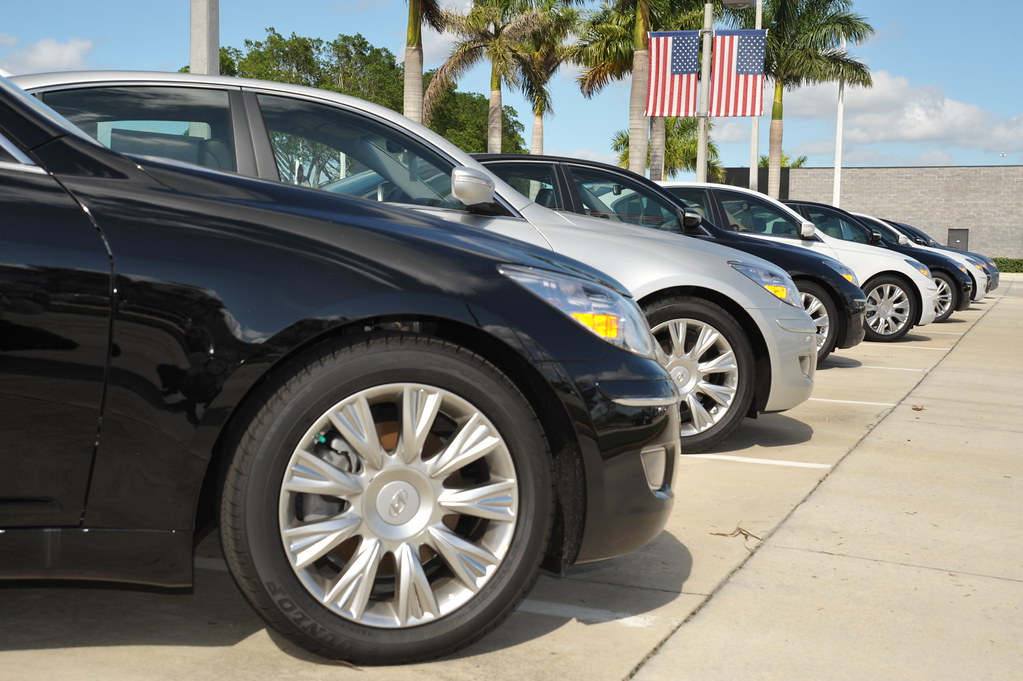
Sticker shock is real this year. The average transaction price for a new vehicle hit $48,699 in July 2025, only a hair below the all-time highs of late 2022. In a market where prices “plateau” at record levels instead of falling, shoppers are looking for smarter ways to get into a reliable ride without draining their savings. This environment makes understanding all your options, especially the modern used-car marketplace, more crucial than ever.
Today’s car sales market is looking up in some areas. If you’re shopping for a new car, discounts are plentiful, despite higher interest rates. However, for used cars, prices are holding steady, but inventory is tight. This creates an interesting, and often challenging, market for buyers, especially those with a trade-in, who must navigate fluctuating conditions.
As consumers, one of the most pressing questions we seek guidance on is, can you afford to buy a car right now? Our answer is yes, with a few conditions. This comprehensive guide aims to ease some of the uncertainty by providing practical, actionable information, focusing specifically on the robust value proposition of Certified Pre-Owned (CPO) models in 2025.

1. **Understanding the Current Car Sales Market Dynamics (New vs. Used)**New-car prices, despite eased COVID-era supply constraints, remain significantly high. Analysts note that 2025 new-car averages are still within a few percent of the record set two years ago. This directly translates into higher monthly payments, steeper insurance costs, and bigger registration fees, which compound over the entire life of a car loan. Such elevated expenses often price new cars entirely out of reach for many households, prompting a search for alternatives.
According to data from Cox Automotive, the parent of Kelley Blue Book, the average price a buyer paid for a new car at the end of 2024 was $49,740. However, incentive spending averages about $4,000, which is up 44% from the year prior, indicating manufacturers are trying to entice buyers. Cox Automotive vAuto data also shows that new car inventory is now plentiful, and shortages are mostly over, making it easier to find desired models, though Lexus and Toyota dealerships still show fewer days of supply than other carmakers.
In contrast, the used car market presents a different picture. According to Cox Automotive, the average used car transaction price at the start of December was $25,574 but has risen to $25,721 since then. Furthermore, the nationwide inventory of used cars for sale is down 5% from this time last year. These trends are not ideal for shoppers looking to buy used vehicles, indicating a tighter supply.
Future supply in the used car market is expected to be constrained. Carmakers manufactured 8 million fewer vehicles during the pandemic, and fewer consumers leased vehicles during that period. This means far fewer vehicles will become available in the used market for at least the next year. Additionally, shoppers priced out of the new car market have increasingly looked to buy used vehicles, further adding to the pricing pressure in the used vehicle market. Despite these challenges, negotiating a better price from dealers today is generally easier than during the past several years when many cars were in short supply, which could help secure a great deal, even on electric cars.

2. **The Real Impact of Car Loan Interest Rates on Your Purchase**Every car loan is composed of several moving parts that collectively define how good a deal you ultimately secure. The transaction price, which is the final cost of the vehicle after accounting for the down payment, trade-in, fees, and taxes, also reflects your success in negotiating down the manufacturer’s suggested retail price (MSRP). However, in an environment of stubbornly high car prices, finding the lowest possible interest rate becomes more important than ever for achieving true car affordability.
The Cox Automotive and Moody’s Analytics Vehicle Affordability Index highlights this concern, showing that monthly car payments were $756 at the end of 2024, the highest level since the summer. Jonathan Smoke, chief economist at Cox Automotive, noted, “Higher prices pushed the average monthly payment to a six-month high. However, we expect vehicle affordability to improve in 2025, driven by lower interest rates and increased incentives.” This indicates that while current rates are high, there is optimism for the future.
Interest rates on used car loans will almost always be higher than on loans for new cars, a crucial factor for budget-conscious buyers. To illustrate the impact, consider this: as of this writing, Cox Automotive reports the average interest rate on a new-car loan is 8.64%. If you finance $30,000 for 48 months at this average rate, with a 20% down payment, your monthly payment would be about $593 (excluding tax). Over the life of the loan, you would pay a total of $28,471, including $4,471 in interest.
Now, let’s compare that to a lower rate. Financing the same $30,000 for 48 months at 4.99% would result in a monthly payment of $553 and a total payback of $26,524. This simple comparison reveals that shaving just 3.65% off the interest rate can save you $1,947 over the life of the loan. For used cars, the average interest rate is even higher, at 13.40%. Financing $20,000 on a used vehicle at this rate would mean monthly payments of $541 and a total payback of $25,945, including $5,945 in interest over a 48-month loan. Securing a low interest rate deal, such as 3% on a certified pre-owned car, would reduce payments to $443 per month and a total payback of $21,249, demonstrating significant savings.
Read more about: Mastering Your Money: 10 Proven Budgeting Strategies for Financial Control and Long-Term Success

3. **Mastering Your Budget: How to Truly Afford a Car**Pinpointing the exact car transaction price you can afford isn’t an easy process, and it can often be a tiresome and sometimes painful experience. Determining how much car you can genuinely afford requires an honest assessment of your income and a truthful look at your spending habits. This reality check, while not pleasant for everyone, is an essential step for all potential car buyers. Fortunately, resources like the KBB Car Affordability Calculator can assist with the complex math involved.
Making a comprehensive monthly budget is the foundational step. This process involves diligently figuring out how much you spend each month across various categories. Essential expenses that you should include in your calculation are your mortgage or rent payments, all utilities such as electric and gas service, and telephone costs, which encompass any landlines, smartphones, and internet broadband. Additionally, factor in insurance premiums for home, renter’s, auto, life, and medical coverage not already deducted from your paycheck.
Beyond these, remember to account for loan and credit card payments, groceries, and entertainment expenses like meals out, movies, cable, and streaming services. The goal is to establish your net income, which is whatever you bring home after taxes and any deductions for retirement or company-sponsored insurance. Subtracting your itemized monthly expenses from your net take-home pay will reveal the amount left for automobile and miscellaneous expenses.
It is crucial to remember that you will always incur extra expenses over and above your regular itemized obligations. Therefore, it is paramount never to overextend your budget for a car, leaving room for unforeseen costs. Once you have determined what amount you can realistically put toward a car payment after calculating the ongoing costs of fuel, car insurance, and monthly upkeep, you will know the maximum monthly car payment you can afford. Tools like our 5-year cost-to-own tool can provide estimates for car maintenance and more, helping you plug this and other requested information into the calculator to land on a transaction price that is both livable and within your budget. As a practical tip, always try comparing car insurance to get a policy estimate before you finalize your car purchase.
Read more about: 12 Toll Roads We’re Dodging: Your Essential Guide to a Toll-Free Road Trip Adventure

4. **Unlocking Affordability: Strategies for Today’s Economy**There is no hidden secret to affording a car in the current economic climate; essentially, it demands a willingness to conduct thorough research and exercise patience. For some prospective car buyers, particularly in this economy, leasing a vehicle may prove to be a more financially prudent option than purchasing. Utilizing a lease calculator can significantly help you determine which type of deal, whether a lease or a purchase, is truly best suited for your financial situation and needs. Exploring all avenues for vehicle acquisition is a key component of smart buying.
Beyond just deciding between buying or leasing, getting a little creative can also go a long way in discovering an affordable path to getting a car. This might involve exploring various financing options, understanding the nuances of the market, and taking advantage of specific dealer incentives. By broadening your approach and thinking outside traditional methods, you can uncover opportunities that might not be immediately obvious, making car ownership more accessible.
This brings us to a particularly smart choice for 2025: Certified Pre-Owned (CPO) vehicles. Buying a car today isn’t just about the initial affordability; for many drivers, the real challenge lies in finding a dependable vehicle that fits their needs without incurring unnecessary risk. CPO vehicles specifically help resolve common dilemmas such as tight budgets, rising repair costs, and the prevalent fear of buying someone else’s problems. They represent a carefully curated segment of the used car market designed to offer greater peace of mind.
This guide is fundamentally designed to inform you, not to sell you a specific product. If you’ve ever found yourself wondering whether a CPO car is truly worth the investment, this in-depth exploration is precisely for you. CPO vehicles address the core concerns of reliability and long-term value, making them a compelling consideration for anyone navigating the complexities of today’s car market. Understanding what makes them different and why they are gaining traction is crucial for making an informed decision.
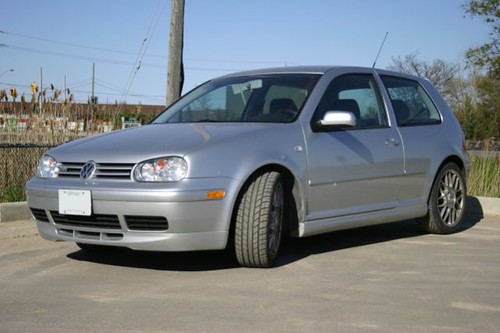
5. **Demystifying Certified Pre-Owned (CPO) Vehicles**To truly appreciate the value proposition, it’s essential to clear up a common misconception: not every used car is a Certified Pre-Owned car. The term “used car” encompasses a vast range of vehicles, varying widely in condition, mileage, and history. A Certified Pre-Owned designation, however, implies a much more rigorous standard and a higher level of assurance for the buyer, fundamentally setting these vehicles apart in the marketplace.
A Certified Pre-Owned vehicle is a used car that has passed a detailed, manufacturer-specific inspection, usually covering 100 or more points. This inspection is comprehensive, scrutinizing everything from mechanical components to safety features and cosmetic condition, ensuring the vehicle meets stringent quality standards set by the original manufacturer. This multi-point inspection process is critical, as it aims to identify and rectify any potential issues before the car is offered for sale as CPO.
To even qualify for a CPO program, these cars must meet specific criteria that go beyond a standard used car check. Typically, they are required to have low mileage, be of recent model years, and have no major accident history. These prerequisites ensure that only the highest quality used vehicles are considered for certification, distinguishing them from the broader used car inventory that may include older models with higher mileage or more extensive damage history.
One of the most significant advantages of a CPO vehicle is that it comes with a manufacturer-backed warranty. This extended coverage provides an additional layer of protection beyond any remaining original factory warranty. In many cases, CPO vehicles also offer additional benefits, which can include roadside assistance, a vehicle history report (such as CarFax), and sometimes even complimentary maintenance. These perks collectively enhance the ownership experience and provide significant peace of mind.
In essence, CPO vehicles offer many of the benefits typically associated with a new car, but without the premium new car price tag. This combination of quality assurance, extended warranty coverage, and added benefits at a more accessible price point makes them an increasingly attractive option for savvy consumers. Independent sources like Consumer Reports often break down exactly what makes CPOs more reliable than standard used vehicles, providing unbiased validation of their enhanced value.
Read more about: Beyond the Sales Pitch: An Objective Look at Extended Car Warranties – Are They Worth the Investment for Savvy Consumers?

6. **Why CPO Offers Reliability Without Guesswork**The used car market is notoriously varied, presenting a spectrum of vehicles from those in excellent condition to others that might be described as “ticking time bombs.” This inherent variability is one of the primary reasons many buyers feel anxious about purchasing a used vehicle, as the risk of unforeseen mechanical issues or costly repairs looms large. CPO vehicles are designed specifically to take this gamble out of the equation, providing a much higher degree of certainty and confidence for the buyer.
With a CPO vehicle, you gain the assurance that the car has undergone a stringent, manufacturer-specific inspection process. This means it has been thoroughly vetted, verified, and, crucially, backed by a real warranty from the manufacturer. This systematic approach to evaluation and certification significantly reduces the likelihood of encountering unexpected problems shortly after purchase, as any issues found during the inspection are typically addressed before the vehicle is sold.
Let’s be honest: no one wants the stressful experience of buying a car only to discover a few months later that it needs $3,000 in repairs. Such an outcome is not only financially burdensome but also incredibly frustrating and, with CPO, largely avoidable. The robust inspection protocols and subsequent warranty coverage act as a protective shield against these unwelcome surprises, giving buyers confidence in their investment.
This enhanced reliability is not just a marketing claim; it’s supported by independent research. Consumer Reports’ spring-2025 survey, for instance, echoes the trend, finding that late-model CPO vehicles deliver reliability scores close to new-car benchmarks. This objective data provides a strong argument for the inherent trustworthiness of CPO vehicles. The added bonus, of course, is that this near new-car reliability comes with the significant advantage of lower purchase prices, making CPO an exceptionally smart choice for value-conscious consumers.

7. **Mitigating Financial Risk with CPO Protection**Investing in a vehicle is a significant financial decision, and for many consumers, the fear of making a bad investment is a palpable concern. This anxiety is especially heightened in the used car market, where the history and condition of a vehicle can sometimes be opaque. CPO programs are strategically designed to address this very concern, offering a robust layer of protection that fundamentally mitigates financial risk for buyers.
Consider a scenario where you’re looking at a three-year-old SUV that is $10,000 cheaper than its brand-new counterpart. While the initial savings seem like a smart move, the true value depends entirely on the vehicle’s reliability. Without adequate protection, that $10,000 saving could quickly diminish if unexpected, expensive repairs arise, turning a seemingly good deal into a financial headache. This is where the CPO designation proves its worth.
With a CPO vehicle, you are inherently protected against many of these risks. Not only has the vehicle been thoroughly vetted through a detailed inspection process, but it also comes with comprehensive coverage that shields you from being blindsided by expensive repairs. This manufacturer-backed warranty is a crucial differentiator, ensuring that major components and systems are covered, providing a financial safety net that standard used cars typically lack.
Ultimately, when you purchase a CPO vehicle, you’re not just acquiring a mode of transportation; you’re also investing in a considerable amount of peace of mind. This sentiment is something that car buyers frequently express—they don’t necessarily need luxury or the absolute newest model, but they absolutely need something that works reliably and continues to work. The CPO program delivers precisely this assurance, transforming a potentially risky used car purchase into a secure and confident investment, safeguarding your budget and alleviating anxieties associated with vehicle ownership.
Read more about: An In-Depth Consumer’s Guide: Navigating New, Used, and Certified Pre-Owned Car Choices
8. **The “Smarter Middle Ground”: CPO as a Strategic Alternative**In the ongoing debate between purchasing a brand-new vehicle and opting for a standard used one, Certified Pre-Owned (CPO) vehicles truly represent a “smarter middle ground” for today’s discerning consumer. This sweet spot effectively bridges the gap between the “too expensive” new car market and the “too risky” traditional used car inventory, offering a compelling blend of value, quality, and peace of mind that is particularly relevant in 2025. It’s an approach that prioritizes smart investment over simply buying the cheapest option.
CPO vehicles provide access to the latest automotive advancements, including newer technology, updated safety features, and improved fuel efficiency, all at a significantly better value than brand-new cars. This means buyers don’t have to compromise on desirable features or modern performance simply because they’re not buying off the new-car lot. The rigorous certification process ensures that these models meet stringent standards, essentially delivering a near-new experience without the associated premium price.
Think of the financial mechanics this way: a brand-new car begins to depreciate the moment it rolls off the dealership lot, losing a substantial portion of its value rapidly. A CPO vehicle, however, has already absorbed this initial, steep depreciation hit. This allows the buyer to reap the benefits of a well-maintained, late-model vehicle without shouldering the most significant financial burden of its early ownership years. It’s a strategic move to leverage depreciation in your favor, acquiring a high-quality asset at a more stable point in its value curve.
This makes CPO an increasingly attractive option for those navigating the complexities of today’s car market. Consumers can secure a vehicle that not only meets their immediate needs but also provides long-term dependability and technological relevance. It’s about making a financially astute decision that aligns with both present budgetary constraints and future expectations for vehicle performance and safety.

9. **Capitalizing on Depreciation: The CPO Advantage**One of the most compelling financial arguments for choosing a Certified Pre-Owned vehicle in 2025 revolves around the concept of depreciation. When you buy a new car, you immediately face the steepest part of its depreciation curve. Industry research indicates that today’s vehicles typically shed roughly 20-30 percent of their value within the first 24 to 36 months of ownership, a pattern that has reportedly “returned to pre-pandemic levels.” This initial loss in value is a significant hidden cost for new car buyers.
To put this into perspective, consider a $48,000 sedan. CarEdge’s 2025 market guide suggests that this vehicle could be worth $34,000 or even less just two years later. This substantial drop in value represents a considerable amount of money paid by the original owner, which the second owner, particularly a CPO buyer, effectively avoids. It allows smart shoppers to acquire a nearly new vehicle at a substantially reduced price point.
When you purchase that same sedan as a certified three-year-old model, you essentially let the first owner bear the brunt of this rapid value decline. The CPO vehicle has already absorbed that initial depreciation hit, allowing you to benefit from the quality and features without paying the premium for the fastest depreciation period. This strategy immediately provides a better overall value, translating into a lower initial purchase price for a vehicle that still offers many years of reliable service.
This intelligent approach to car buying highlights why lightly-used vehicles, especially those that are CPO, are becoming the star of 2025’s automotive market. It’s a direct response to record-level new-car prices and a savvy way to maximize your investment. By understanding and leveraging the depreciation curve, consumers can make a highly cost-effective decision that delivers new-car quality without the new-car pricing.

10. **Advancements in CPO Certification Standards**The landscape of “buying used” has undergone a significant transformation, particularly with the evolution and enhancement of Certified Pre-Owned (CPO) programs. Historically, the phrase might have evoked images of questionable lots and opaque maintenance histories. However, 2025’s CPO programs are decisively rewriting this narrative, establishing new benchmarks for quality assurance and consumer confidence. These programs are no longer just about basic checks; they represent a thorough, multi-faceted commitment to vehicle integrity.
Modern CPO programs boast impressively upgraded inspections, often exceeding 160 points. These comprehensive checks delve deep into every aspect of the vehicle, scrutinizing not only mechanical components but also safety features, structural integrity, and even cosmetic condition. The goal is to ensure the vehicle meets the original manufacturer’s rigorous quality standards before it can be designated as CPO. This meticulous process helps identify and rectify potential issues, thereby significantly reducing the risk of unexpected problems for the new owner.
Furthermore, these enhanced certification standards come hand-in-hand with extended warranties that offer unparalleled peace of mind. For example, Lexus, an industry leader, recently won U.S. News’ “Best CPO Program” for the seventh consecutive year, providing up to six years of bumper-to-bumper coverage on eligible vehicles. These robust warranties now frequently extend to critical areas such as powertrains, sophisticated infotainment systems, and advanced driver-assistance hardware, which are often costly to repair if issues arise.
Independent sources further validate the effectiveness of these improved standards. Consumer Reports’ spring-2025 survey, for instance, reinforces this trend, finding that late-model CPO vehicles deliver reliability scores remarkably close to new-car benchmarks. This objective data, coupled with the added bonus of lower purchase prices, underscores the inherent trustworthiness and value of CPO vehicles. The combined assurance of stringent inspections and extensive warranty coverage essentially provides peace of mind that rivals factory-fresh ownership, but without the factory-fresh price tag.
Read more about: An In-Depth Consumer’s Guide: Navigating New, Used, and Certified Pre-Owned Car Choices

11. **Optimizing Your CPO Financing Strategy**While the current economic climate maintains elevated interest rates, a closer look reveals that the financing landscape for Certified Pre-Owned (CPO) vehicles is more favorable than many consumers might assume. Lenders are increasingly “courting used-car buyers more aggressively than ever,” making it possible to secure competitive financing deals that significantly enhance the affordability of a CPO purchase. Understanding these opportunities is key to optimizing your overall car-buying budget.
Bankrate’s August 2025 survey highlights this trend, reporting average 48-month used-car Annual Percentage Rates (APRs) at 7.68 percent. What’s noteworthy is that this rate is merely half a point above the rates typically offered on 60-month new-car loans. This narrowing gap in interest rates between new and used vehicles makes the CPO option even more financially appealing, especially when considering the lower principal amount of a pre-owned vehicle.
The financing advantages become even more pronounced when diving into manufacturer CPO promotions. Many brands are actively offering special financing rates to attract buyers to their certified pre-owned inventories. For instance, context shows that Audi and BMW are advertising rates as low as 4.99 percent financing for their 2020-2025 certified models. Such promotional rates are well below the national average for used car loans, presenting a significant opportunity for savvy buyers.
In practical terms, these favorable financing options mean that a borrower with a good credit history can often secure monthly payments that are comparable to, or even lower than, those offered on new-car deals. This is primarily due to the combination of a lower principal amount (because the CPO vehicle has already depreciated) and increasingly competitive interest rates. By strategically seeking out these CPO-specific financing incentives, buyers can unlock substantial savings over the life of their loan, making a quality vehicle more accessible and truly affordable.
Read more about: Unlocking Dealership Gold: 15 Proven Strategies Car Dealers Use to Maximize Profit on Every Sale and Secure Their Future

12. **Modern Tech and Safety in CPO Vehicles**A prevalent misconception in the “new versus used” vehicle debate is the belief that one must purchase a brand-new car to access cutting-edge technology and advanced safety features. However, the reality of the automotive market in 2025 tells a different story. By the 2020 model year, mainstream automotive brands had already extensively integrated sophisticated features across many of their trim levels, fundamentally redefining what consumers can expect from a pre-owned vehicle.
Vehicles from the 2020 model year and beyond are often equipped with advanced driver-assistance systems (ADAS) that were once exclusive to premium luxury badges. Features such as adaptive cruise control, lane-keeping assist, and automatic emergency braking became widely available. A Cars.com roundup, for example, catalogued dozens of 2020 vehicles—including popular models like the Ford Edge, Toyota RAV4, and Mazda3—that were already shipping with semi-autonomous driver-assist suites, ensuring a high level of safety and convenience for drivers.
For consumers prioritizing specific safety or technology features, resources like Consumer Reports maintain a valuable reference list of 2016-2021 models that are equipped with full ADAS safety stacks. This allows buyers to easily research and identify CPO vehicles that include the desired technological enhancements without incurring the significantly higher premiums associated with 2025 models. It’s an effective way to obtain modern functionality at a fraction of the cost.
Furthermore, many vehicles from this era also incorporate desirable connectivity features such as wireless Apple CarPlay and Android Auto, which became common after 2020. Coupled with over-the-air update capabilities found in numerous brands, this means that a CPO purchase can deliver an essentially “new” technology experience. Therefore, choosing a CPO model from recent years enables buyers to enjoy state-of-the-art safety and infotainment systems, proving that cutting-edge features are well within reach without the need to buy brand-new.
Read more about: An In-Depth Consumer’s Guide: Navigating New, Used, and Certified Pre-Owned Car Choices
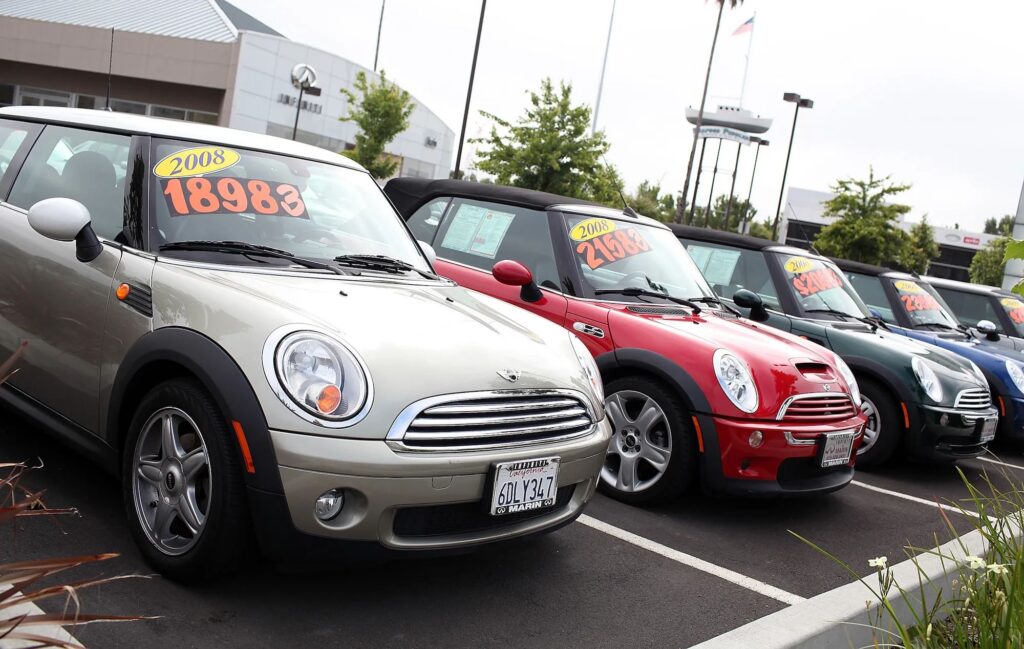
13. **Actionable Strategies to Leverage 2025 Used Car Trends**Navigating the 2025 used car market effectively requires a strategic approach to ensure you capitalize on the current trends and secure the best possible deal. While the market presents unique challenges, there are clear, actionable steps consumers can take to find an affordable and reliable Certified Pre-Owned vehicle. These strategies focus on diligent research, smart timing, and informed decision-making, empowering buyers to make a confident purchase.
First, identify the “sweet spot” in the used car market. This typically involves focusing on vehicles that are three to five years old. By choosing models within this age range, you effectively avoid the steepest initial depreciation that new cars experience while still gaining access to modern safety features, infotainment systems, and overall technological upgrades. This balance offers maximum value, combining contemporary amenities with a significantly reduced price point compared to new vehicles.
Second, always insist on certification. Opting for a Certified Pre-Owned (CPO) vehicle, rather than a standard used car, adds a crucial layer of protection. While a robust CPO warranty might entail a small premium over non-certified stock, it can save thousands of dollars on unexpected repairs, providing invaluable peace of mind. The stringent multi-point inspections and manufacturer-backed warranties that define CPO programs ensure a higher standard of quality and reliability.
Third, shop for financing before you even begin looking at cars. Obtaining pre-approval from your bank or credit union gives you a solid understanding of your borrowing power and a benchmark interest rate. You can then compare this pre-approval with any special dealership or manufacturer CPO financing rates to ensure you secure the most competitive package available. Lastly, always check for technology “must-haves” using reliable resources like Consumer Reports or Cars.com to confirm that the model year you’re considering includes the specific driver-assist or connectivity features important to you. Timing your purchase can also be advantageous, as late-summer and year-end periods often coincide with aggressive CPO financing offers.
Read more about: Unlock the Skies: 11 Life-Changing Secrets to Finding Cheap Flights with Google Flights

14. **Decoding the Vincentric Best CPO Value in America Awards 2025**For consumers seeking objective, data-driven validation of vehicle value, the Vincentric Best CPO Value in America™ awards serve as an indispensable guide. These annual awards meticulously identify which Certified Pre-Owned (CPO) vehicles deliver the lowest cost of ownership within their respective segments, offering powerful insights for informed purchasing decisions in 2025. Vincentric’s methodology is comprehensive, measuring cost-of-ownership across eight critical factors.
These factors include depreciation, fees & taxes, financing costs, fuel consumption, insurance premiums, maintenance expenses, opportunity cost, and potential repair costs. By analyzing these diverse elements, Vincentric provides a holistic view of a vehicle’s true long-term affordability, moving beyond just the initial purchase price. This thorough approach ensures that the “best value” designation is truly reflective of a vehicle’s economic efficiency over its ownership lifecycle.
The 2025 awards showcase several standout brands and models across various categories. For passenger cars, Mitsubishi notably won the Lowest CPO Cost to Own Passenger Car brand award, propelled by the exceptional performance of its Mirage model, which demonstrated ownership costs over $1,396 lower than its nearest competitor. In the luxury car segment, Audi claimed the Lowest CPO Cost to Own Luxury Car brand award, thanks to model-level wins for the A5 coupe and convertible, and the TT. The A5 convertible, for instance, showed ownership costs over $6,182 lower than its nearest competitor.
For SUVs, Subaru earned the Lowest CPO Cost to Own SUV brand award, with the Outback leading the charge, boasting ownership costs over $1,181 lower than its closest rival. Volvo secured the Lowest CPO Cost to Own Luxury SUV brand award, aided by a win for the C40, which showed an impressive $6,212 lower ownership cost than its closest competitor.
Ford took home the Lowest CPO Cost to Own Truck brand award, supported by the Maverick Hybrid and F-250, with the Maverick Hybrid’s ownership costs being over $5,771 lower than its nearest competitor. Ram rounded out the brand awards, claiming the Lowest CPO Cost to Own Van brand award, driven by the strong performance of its ProMaster City passenger and cargo vans. These awards provide a clear roadmap for consumers prioritizing long-term value and affordability in their CPO purchase.
**Final Thoughts on Maximizing Your CPO Purchase**
As we’ve explored, the automotive market in 2025 makes a compelling case for Certified Pre-Owned vehicles. Record-level new-car prices, coupled with the still-steep depreciation of new models, have created a unique economic environment where lightly-used vehicles shine brightest. Enhanced certification coverage and increasingly competitive financing options further solidify the CPO advantage. When you consider that models from 2020 and later boast nearly identical safety and technology suites to their brand-new counterparts, the value equation tilts decisively toward the pre-owned aisle. If you’re weighing the auto trends of the moment, remember this key insight: the smartest way to beat the market is to allow someone else to absorb the initial depreciation hit. You can then confidently scoop up a well-equipped, thoroughly vetted vehicle that feels new to you, without the hefty price tag. This strategy not only benefits your wallet but also provides significant peace of mind, making a CPO purchase a genuinely smart and informed decision in today’s economy.


